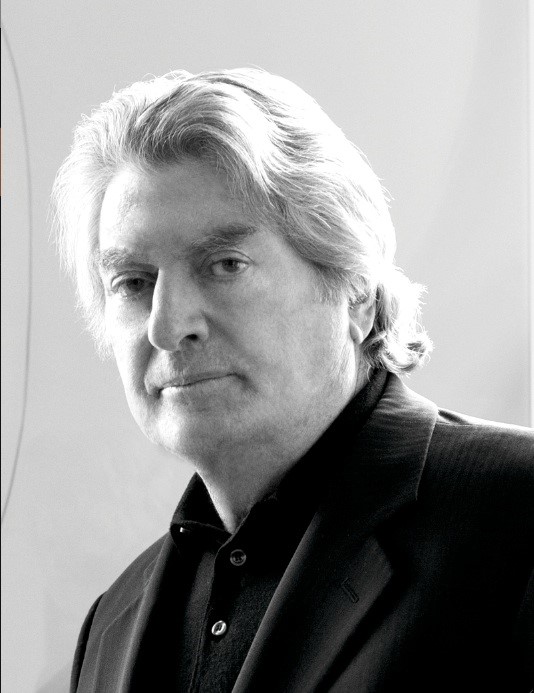Opinion: Developing a branding programme for the 21st century

With economic disruption, radical changes in technology, the emergence of the global economy, and the crises of complexity generated by the internet, politicians and social media, it has never been more challenging to structure branding programmes.
You can’t escape complexity. It robs us of time, patience, understanding, money and optimism. In building an effective branding programme, use the power of clarity as a focal point in defining brand identity, brand voice and brand experience. Clarity helps deliver simple, hard-hitting solutions that inspire action and drive impact. Clarity needs to be the foundation of a brand’s identity.
I am appalled by the preponderance of what I refer to as ‘strategic nonsense,’ brand platforms with ever-expanding arrays of constructs – generic and cumbersome mission and vision statements, unimaginative positioning, predictable definitions of the organisation’s culture, a garbled brand voice and an overwhelming multitude of messages. One of my clients framed a chart with the seven elements in their branding programme and while it was the pride of the marketing department, it was disparaged by virtually everyone else in the organisation and was unworkable.
Contrary to common practice, penetrating branding programmes are not built on research findings – what I call the flawed ‘outside-in’ approach. To quote Henry Ford, “If I asked people what they wanted, they would have said faster horses.” Customers can tell you what you are doing wrong, but not how to develop a distinctive, compelling brand solution. “You can’t design by focus groups,” said Steve Jobs. “People don’t know what they want until you show it to them.” I prefer this ‘inside-out’ approach, where the hard work of finding the strategies for building your branding programme grows out of tapping into insights and talent within your organisation.
I have identified several essential features that must be addressed in building a branding programme in the 21st century.
Brand identity should be framed by a clearly-defined purpose. An organisation’s purpose is its reason for being in business, the calling a company answers from the marketplace and the problems it is trying to solve. Defining a clear, succinct purpose creates coherence for employees and should be the driving force behind a company’s strategies and investments.
A real purpose should not be confused with corporate responsibility programmes currently in vogue. Finding and living with a purpose statement provides the framework for making decisions, fashioning your value proposition, voice and culture.
Create a bold, compelling positioning.
We are being bombarded by obscure, overly clever, unintelligible tag lines masquerading as positioning. Here are a few: ‘Life. Well spent.’ from Sears, ‘The Power of &’ from AT&T, ‘A body for every body,” from Victoria’s Secret, ‘Enjoy Better’ from Time Warner (now Spectrum) and ‘Making Technology Work For You,’ from Best Buy. A penetrating positioning is required to ignite employees to live the brand and actively support it, to build integrated marketing and communications programmes and to differentiate your brand from competitors.
The positioning is the foundation for ensuring that a branding programme rings true with employees. First, conduct validation research to check that it is clear (audiences understand your message), credible (is it believable, not over-promising) and relevant (generating supportive behaviour from your stakeholders).
Next, define and execute your brand voice. Several years ago, I found a cartoon in The New Yorker that demonstrated one of the pitfalls to creating a coherent brand voice. The illustration was framed behind the desk of a CEO with six or seven members of his staff standing in front of him. It was captioned, “Be sure that the copy speaks with one Voice.” It dramatised one of the major problems in building distinctive, spirited, appealing brand voices – too many people get involved in the approval process. To quote David Ogilvy, “Search all the parks in all your cities – you’ll find no statues of committees.”
Many of the branding programmes I have studied incorporate the definition of the brand voice in their guidelines with four or five predictable words – human, empathetic, courageous and so on with short definitions. The prototype materials that accompany the words rarely reflect the brand voice. This disconnect is one of the weakest points in modern branding programmes and undermines their success.
When you are building a brand voice, clarity is critical. Your voice should also be authentic and honest. Rise above the noise by projecting your individual corporate personality. These days, you absolutely need a training programme to teach the organisation to use the voice, starting with corporate leadership and cascading through all layers of the organisation. Since the advent of the internet and the rise of social media, everyone is projecting the company’s voice, not just the people who create the organisation’s communications. Without guidance, employees fragment the company’s voice and replace it with their own.
Peter Drucker famously said, “Culture eats strategy for breakfast.” One of the essential components for a modern branding programme is defining and living the brand culture. Employees will actively support the brand if they see the organisation is not just about money, but also has meaning with values that they can embrace and share. People want to be part of a winning team. They will also enrich the brand if they are made to feel important while achieving personal and professional growth (and have fun doing it).
An inspired culture is the underpinning for building a branding programme with real impact. When evaluating brand impact, corporations should measure how the culture is working to support the brand, in addition to all the traditional performance indicators.
It is important to instil a passionate, uplifting spirit and creativity as the core of your brand identity. In the words of Albert Einstein, “Logic will get you from A to B, imagination will take you everywhere.”
Alan Siegel is president and CEO of Siegelvision












